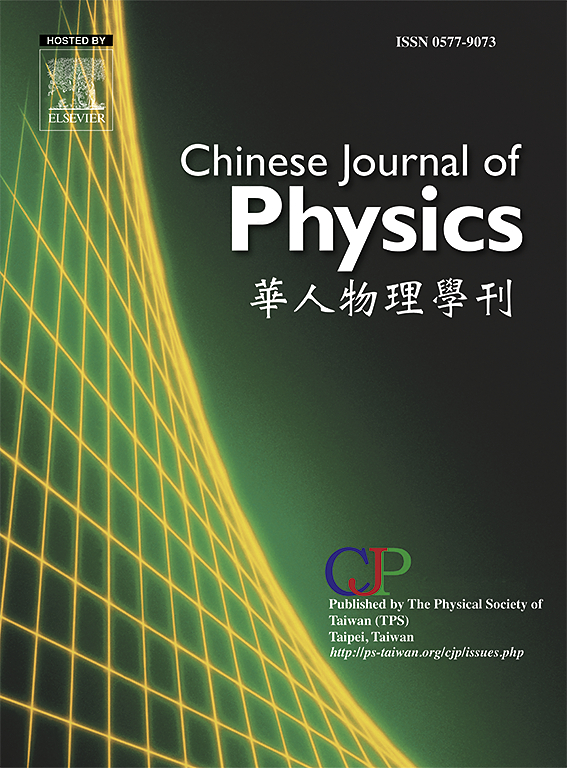Role of non-conserved gravity theory and electric charge in constructing complexity-free stellar models: A novel approach under non-minimal coupling
IF 4.6
2区 物理与天体物理
Q1 PHYSICS, MULTIDISCIPLINARY
引用次数: 0
Abstract
This study explores the application of complexity factor within the context of Rastall gravity, exploring its implications on a static spacetime admitting spherical symmetry associated with anisotropic fluids under an electromagnetic field. The field equations are derived for a static charged sphere that provides a foundational framework for analyzing gravitational effects in this non-conserved theory. The mass function is formulated by incorporating both fluid and geometric parameters, offering insights into how mass distribution affects spacetime curvature. Through orthogonal decomposition of the Riemann tensor, a set of scalar quantities is obtained, referred to the structure scalars, which serve as indicators of celestial complexity. One specific scalar is then specified as the complexity factor, i.e., , facilitating further analysis on its role in characterizing complex systems. The presence of unknowns in gravitational equations necessitates the imposition of constraints to facilitate their solution. To address this, alongside three distinct conditions are employed which yield diverse stellar models. A comprehensive graphical analysis is conducted using multiple values of the Rastall and charge parameters. Notably, the findings of this study align with those predicted by Einstein’s theory. More appealingly, the Rastall theory demonstrates its superiority in the presence of charge under model 2 when it is compared with the general theory of relativity.
非守恒引力理论和电荷在构建无复杂性恒星模型中的作用:非极小耦合下的一种新方法
本文探讨了复杂性因子在拉斯托引力背景下的应用,探讨了其在电磁场下具有各向异性流体的静态时空中具有球对称性的意义。导出了静态带电球的场方程,为分析非守恒理论中的引力效应提供了基础框架。质量函数是通过结合流体和几何参数来制定的,为质量分布如何影响时空曲率提供了见解。通过黎曼张量的正交分解,得到一组标量,称为结构标量,作为天体复杂性的指标。然后指定一个特定的标量作为复杂性因子,即YTF,便于进一步分析其在表征复杂系统中的作用。引力方程中未知量的存在需要施加约束以促进其求解。为了解决这个问题,YTF=0和三个不同的条件被采用,产生不同的恒星模型。利用拉斯托尔和电荷参数的多个值进行了全面的图形分析。值得注意的是,这项研究的结果与爱因斯坦理论的预测一致。更吸引人的是,当拉斯托理论与广义相对论相比较时,它在模型2下存在电荷时显示出优越性。
本文章由计算机程序翻译,如有差异,请以英文原文为准。
求助全文
约1分钟内获得全文
求助全文
来源期刊

Chinese Journal of Physics
物理-物理:综合
CiteScore
8.50
自引率
10.00%
发文量
361
审稿时长
44 days
期刊介绍:
The Chinese Journal of Physics publishes important advances in various branches in physics, including statistical and biophysical physics, condensed matter physics, atomic/molecular physics, optics, particle physics and nuclear physics.
The editors welcome manuscripts on:
-General Physics: Statistical and Quantum Mechanics, etc.-
Gravitation and Astrophysics-
Elementary Particles and Fields-
Nuclear Physics-
Atomic, Molecular, and Optical Physics-
Quantum Information and Quantum Computation-
Fluid Dynamics, Nonlinear Dynamics, Chaos, and Complex Networks-
Plasma and Beam Physics-
Condensed Matter: Structure, etc.-
Condensed Matter: Electronic Properties, etc.-
Polymer, Soft Matter, Biological, and Interdisciplinary Physics.
CJP publishes regular research papers, feature articles and review papers.
 求助内容:
求助内容: 应助结果提醒方式:
应助结果提醒方式:


